Webinars
Jump to navigation
Jump to search
OpenCommons runs Webinars, typically one hour long with 30-40min of presentation followed by Q&A. These webinars are recorded and listed on this page. To add a new Webinar fill in this form.

|
Teaching Open Source | |
| Professors from Western New England University and Drexel University share their knowledge, resources and experience teaching open source. | ||

|
Planning for Equitable Urban Density and Healthy Communities | |
| Through his leadership he has helped clients use sustainable urban design practices that give communities the greatest potential to create equitable and low carbon emitting neighborhoods. | ||

|
Supporting Community Cooperation in Urban Design | |
| Engagement, Visioning, Master Planning, and Making Agreements are found in a process that communities use to make meaningful change in their neighborhood. Community stories are precedents demonstrating the value of integrating nature with development to sustain active and vital community-oriented neighborhoods. | ||

|
How By-Name Data Helps Communities End Homelessness | |
| The by-name list is a real-time, person-specific list of everyone experiencing homelessness. The by-name list provides communities with a full and real-time view of homelessness in their geography. Using this data, we will be able to triage individual cases, understand the broader patterns of homelessness in their community, and ensure that resources and efforts are driving down the overall number of people experiencing homelessness. | ||

|
Built For Zero | |
| Built for Zero is a national movement whose methodology and support network assists communities in their journey to end homelessness. Collaboration and testing of ideas to improve outcomes are at the heart of the Built for Zero continuous improvement approach that has proven itself in communities across the United States and Canada. | ||

|
Mobelizing Data to Create Data Markets | |
| The boundary between the physical and the digital has disappeared. Our health, our finances, our shopping, our things - they are now fully digitized and exist in the form of data. This webinar will discuss how this data can be mobelized to create markets. The presentation will discuss 2 case studies on the markets forming around finance and health data. | ||

|
Go-Green Webinar | |
| GoGreen aims to help people understand the impact of small sustainable gestures on their communities through technology. It presents itself as a community rewards system where participating points providers can define actions that support their communities objectives and reward people for taking them. For the users they see a marketplace of options along with rewards based on secure blockchain based smart contracts for supportive behavior. | ||

|
Neighborhood Data for Social Change Platform | |
| The Neighborhood Data for Social Change (NDSC) platform is a free, publicly available online resource for civic actors to learn about their communities. | ||

|
Lessons from a Super-Aging Society | |
| Japan is 20 to 30 years ahead of the U.S. in terms of demographic change, knowledge, and experiences in addressing an aging society. This webinar hosts one of the world-leading gerontologists, professor Hiroko Akiyama, from the University of Tokyo. | ||

|
Making Government Contracting Better | |
| A modern economy needs a smart, data-driven government contracting ecosystem. Our mission is to bring governments, businesses, citizens and open data together to build one. | ||

|
Oregon State Data Strategy and Data Literacy Initiative | |
| The Oregon Data Strategy provides enterprise leadership and a long-term approach for how the State will govern data as a critical asset and critical infrastructure, along with direct actions over the coming biennium (2021-2023) to set Oregon on the path for success. | ||

|
Grid Power Overview | |
| Overview of grid power | ||

|
Inventing the Platform and Path to Sustainability Success | |
| Regenerative urbanism creates a balance where buildings, their occupants and the surrounding systems, both natural and man-made, work together to create resources rather than deplete them. Research shows that the integration of regenerative elements can yield greater returns over time. This approach uses dynamic governance systems to monitor and share the costs and benefits of urban life. It allows for multiple objectives to be achieved, from managing water and reusing waste biproducts to optimizing renewable resources across compact communities in new ways. | ||

|
The Evolution of the Built Environment | |
"At PGE, sustainability means business practices that support a vibrant economy, a healthy environment and strong communities today and into the future. It’s not a nice-to-have — it’s a must. As we make progress toward our environmental, social and governance goals, we’ll focus on how to become sustainable in everything we touch, including what we do for our customers."
| ||

|
Hybrid Cellular and Wi-Fi Networks | |
| What’s the value of automatic, secure Wi-Fi connectivity to a smart city? Mobile phone coverage in dense cities can suffer from blackspots and poor indoor performance. | ||

|
DIRTT Modular Interiors | |
| Build the perfect interior space for what you need now –– and whatever the future brings. Designed to respond to your needs for any place, from healthcare to school or office to home life. This is digital construction at its best. | ||

|
TriMet’s Hop Fastpass—Open Architecture in Fare Payment | |
| Hop’s open architecture allows TriMet to capitalize on changing technologies or falling costs, avoiding expensive, cumbersome negotiations with a proprietary systems integrator that is set-up to profit from changes to the fare payment system over time. | ||
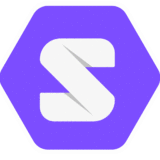
|
Solid | |
| Solid is a new project led by Tim Berners-Lee, taking place at MIT. The project aims to radically change the way Web applications work today, resulting in true data ownership as well as improved privacy. | ||

|
Open urban platform | |
| The open urban platform (OUP) is a new digital urban infrastructure, comprising a set of policy agreements, national and international legislation, standards and their technical implementation, under the direction of a local or other governmental authority. This meeting is an opportunity to discuss the Aim standardization advisory group with its Chair Frans Jorna, Director digital city and innovation City of Almere. | ||

|
The Library of Things at Clackamas County Libraries | |
| Eight Clackamas County public libraries have opened a "LIbrary of Things". Learn more about a "Library of Things and the eight Clackamas County Libraries that have opened one. | ||

|
Smart City Saitama | |
| We founded a consortium, called Smart City Project (SCP), inviting 27 global leading companies from each sector relevant to Smart City. At SCP, Smart City was defined based on 5 layers and 10 areas. This clarified at which segments each company’s solutions fall into. With bird’s eyes view across 5 layers / 10 areas, we examined solutions to ensure the entire optimization. | ||
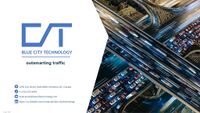
|
Traffic Management by Blue City | |
| Blue City’s mission is to improve the transportation network efficiency, safety, and infrastructure planning with data from innovative real-time lidar data to provide accurate traffic data day or night, sun or snow. | ||

|
Mobility Catalog | |
| Urban Planning and Smart Sustainable Urban Mobility are very important in the holistic vision of regions and countries. Mobility plays a key role in the current society being as important as basic services.From this, we drew the vision of building a Catalogue that would help cities, regions and countries to have a single, integrated vision for Urban Mobility. | ||

|
OMG and IIC Structure and activities | |
| Stephen Mellor is the Chief Technical Officer for the Industrial Internet Consortium, where he directs the standards requirements and technology & security priorities for the Industrial Internet. In that role, he coordinates the activities of the several engineering, architecture, security and testbed working groups and teams. He also co-chairs both the Definitions, Taxonomy and Reference Architecture workgroup and the Use Cases workgroup for the NIST CPS PWG (National Institute for Standards and Technology Cyberphysical System Public Working Group). | ||
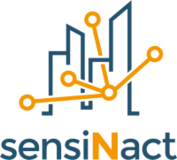
|
Eclipse Smart City | |
| The Eclipse sensiNact project consists of a software platform enabling the collection, processing and redistribution of any data relevant to improving the quality of life of urban citizens, program | ||

|
Digital City Testbed Center | |
| The Digital City Testbed Center at Portland State University establishes a network of campuses in the Pacific Northwest where smart city technologies can be tested before being deployed in communities at large. | ||
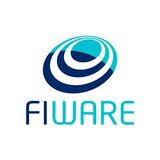
|
FIWARE Platform | |
| The FIWARE Community is an independent Open Community whose members are commited to materialise the FIWARE mission, that is: “to build an open sustainable ecosystem around public, royalty-free and implementation-driven software platform standards that will ease the development of new Smart Applications in multiple sectors”. The FIWARE Community is not only formed by contributors to the technology (the FIWARE platform) but also those who contribute in building the FIWARE ecosystem and making it sustainable over time. | ||

|
Civic Platform | |
| The CIVIC Platform is made possible by the Civic Software Foundation, a non-profit organization bringing data science, modern tech, and civic willpower together to create a force for public good. | ||

|
Private Data Objects | |
| As interest in Hyperledger Sawtooth grows, robust SDKs continue to be important for helping developers innovate on this blockchain platform. Since mobile is one of the most popular application platforms, it is crucial to extend Sawtooth to support native iOS and Android application development. | ||
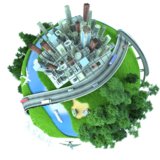
|
IES-City Framework | |
| Two barriers currently exist to effective and powerful smart city solutions. First, many current smart city ICT deployments are based on custom systems that are not interoperable, portable across cities, extensible, or cost-effective. Second, a number of architectural design efforts are currently underway (e.g. ISO/IEC JTC1, IEC, IEEE, ITU and consortia) but have not yet converged, creating uncertainty among stakeholders. To reduce these barriers, NIST and its partners convened an international public working group to compare and distil from these architectural efforts and city stakeholders a consensus framework of common architectural features to enable smart city solutions that meet the needs of modern communities. | ||
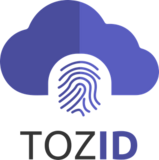
|
Cryptography | |
| Making data and identity security easy to use and private is our mission. We sweat every detail to ensure the best experience possible while maintaining the highest level of security. Tozny’s solution allows us to take that security to the next level, and ensures that our client’s most sensitive data is as protected as possible. | ||
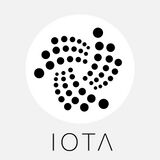
|
IOTA Enabling the Smart City | |
| IOTA’s Tangle is an open, feeless and scalable distributed ledger, designed to support frictionless data and value transfer. | ||
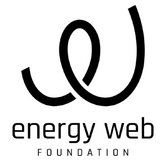
|
Energy Web Foundation | |
| Energy Web Foundation (EWF) has pioneered an enterprise-grade blockchain platform tailored to the sector’s regulatory, operational, and market needs. EWF is the world’s largest energy blockchain ecosystem—a growing community of over 100 energy market participants who we work with to bring energy blockchain solutions to market. The Energy Web has become the industry’s largest energy blockchain ecosystem and leading choice for decentralized technology powering the world’s energy future. | ||
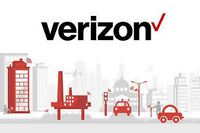
|
Smart Communities Traffic | |
| At Verizon, our goal is to help improve the quality of life for people living in cities around the world and increase the ways and efficiency in which cities operate. It’s not just about smart technology, connectivity or applications; it starts with a focus on the people and their basic wants and needs. We partner with each city to design infrastructure, systems and processes that elevate the way they provide services in new and cost-effective ways. | ||
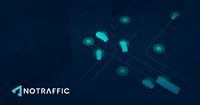
|
NoTraffic | |
| NoTraffic has developed the first AI-powered traffic signal platform that connects road users to the city grid, solving today’s traffic challenges while unlocking smart mobility benefits for the cities, and creating entire new way of life… | ||
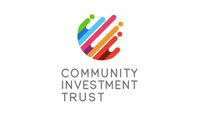
|
Community Investment Trust | |
| The Community Investment Trust is a first-of-its-kind financial inclusion tool created to empower residents and strengthen communities. The CIT is designed to remove barriers to financial inclusion and provide a low-dollar investment opportunity in a commercial property to local residents. | ||
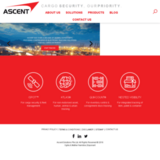
|
Cargo Tracking | |
| Secure and track your assets globally with Ascent Solutions™ and keep your business safe on the go. With this solution, you will gain visibility over your assets through live updates on its location and status. Further eliminate threats to cargo security and manage your assets better by receiving alerts in real time whenever the iSCOUT™ or the iSENSOR™ electronic seals securing your assets have been tampered. | ||

|
Accessible Transportation | |
| Accessible Transportation Technologies Research Initiative (ATTRI) a division of the USDOT seeks to remove barriers to transportation by leveraging advanced technology to enable people to travel independently anytime of the day to any destination, regardless of their individual abilities | ||
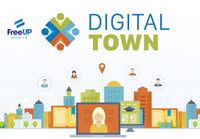
|
DigitalTown | |
| DigitalTown is partnering with FreeUP Mobile to bring Free Wireless Service to US members of the DigitalTown movement. The deal includes a Free SIM Card and Free Wireless Service by using the FreeUP Rewards app on the nation’s largest 4G LTE network. | ||
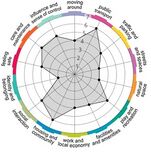
|
Place Standard | |
| The Place Standard tool provides a simple framework to structure conversations about place. It allows you to think about the physical elements of a place (for example its buildings, spaces, and transport links) as well as the social aspects (for example whether people feel they have a say in decision making). | ||
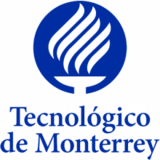
|
Tecnologico Monterrey | |
| Through educational experiences Tecnológico de Monterrey form people who become agents of change willing to be even more competitive in order to benefit all, with a clear focus on being instead of having, on serving others instead of possessing things; people who are responsible for their own lives, aware of the fact that their actions may promote the transformation of others. | ||
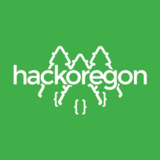
|
Hack Oregon | |
| Hack Oregon is a rapid prototyping lab in Portland Oregon, taking a creative approach to data projects that bring insight to complex issues in the public interest. We’re a nonprofit, our teams are made of volunteers, and all the work we do is open source. | ||
| A Blueprint for Public Wi-Fi Networks | ||
| The goals of the Global City Teams Challenge program are to bring together thought leaders and experts on a wide variety of topics relating to modern “Smart City” technologies and to have them share their knowledge and create best practices to assist those who are coming after them. The authors and contributors of this blueprint have designed, built, and managed Public Wi-Fi systems all over the United States and it is this spirit of collaboration and knowledge sharing that drives this effort forward. | ||